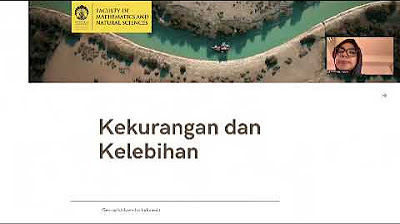Pemodelan Bawah Permukaan - Kelompok 4
Summary
TLDRThis presentation by Group 4 explores subsurface modeling in geoscience, emphasizing both direct and indirect methods such as geological modeling, remote sensing, and various geophysical techniques. It highlights the importance of 3D geological visualization for resource exploration, risk mitigation, and effective planning in hydrocarbon and mineral extraction. The discussion covers methodologies like seismic analysis, gravity surveys, and petrophysical studies, showcasing their applications in identifying geological hazards and optimizing energy resources. Ultimately, the presentation underscores the critical role of subsurface modeling in enhancing understanding of geological structures and guiding exploration efforts.
Takeaways
- 🌍 The presentation focuses on subsurface modeling in geological exploration.
- 🔍 Subsurface modeling can be achieved through direct and indirect methods, including field investigations and remote sensing.
- 🗺️ Geological modeling is crucial for understanding subsurface conditions, including geological structures and lithology.
- 📊 The goal of subsurface modeling includes creating 3D geological visualizations to analyze rock distributions and geological relationships.
- 📈 Effective planning for exploration can be facilitated by accurate subsurface modeling, reducing exploration risks and costs.
- ⚠️ Risk mitigation for geohazards, such as landslides and liquefaction, is an important aspect of subsurface modeling.
- 🧪 Different types of subsurface modeling include facies modeling, petrophysics, and structural analysis.
- 🔬 Tools used in logging, such as gamma-ray logs and density logs, are essential for obtaining subsurface property data.
- 📉 Seismic methods, including reflection and refraction, play a key role in subsurface modeling by providing high-resolution data.
- 🌡️ Applications of subsurface modeling extend to hydrocarbon exploration, geothermal energy assessment, mining optimization, and groundwater management.
Q & A
What is the primary focus of the video?
-The video primarily focuses on the significance of understanding the physical properties of food, particularly in the context of plant-based protein meat alternatives.
How do the physical properties of food influence consumer choices?
-Physical properties such as texture, appearance, and taste play a crucial role in influencing consumer preferences and acceptance of food products, especially when it comes to plant-based alternatives.
What are the main challenges associated with plant-based protein meat alternatives?
-The main challenges include achieving a texture and flavor profile that closely mimics animal meat, as well as addressing consumer perceptions and nutritional adequacy.
Why is texture particularly important in plant-based meat products?
-Texture is important because it directly affects the eating experience; consumers often associate certain textures with meat, and achieving a similar texture in plant-based products is essential for acceptance.
What role do additives play in improving plant-based meat alternatives?
-Additives can enhance flavor, improve texture, and stabilize products, making them more appealing to consumers while ensuring they maintain their quality during storage and preparation.
How can understanding food science help in developing better plant-based products?
-A deep understanding of food science enables developers to manipulate ingredients effectively, optimize recipes, and create products that not only meet nutritional needs but also satisfy sensory expectations.
What is the significance of sensory evaluation in food product development?
-Sensory evaluation is significant because it provides insights into how consumers perceive and interact with food, allowing developers to make informed adjustments to enhance acceptability.
How does consumer education impact the acceptance of plant-based alternatives?
-Consumer education is vital as it helps dispel myths and misconceptions about plant-based foods, ultimately leading to greater acceptance and consumption.
What innovations are currently shaping the future of plant-based meat alternatives?
-Innovations such as new extraction methods for proteins, fermentation techniques, and advancements in food processing are shaping the future by improving the quality and appeal of plant-based meat alternatives.
What trends are emerging in the plant-based protein market?
-Emerging trends include increased demand for clean label products, greater emphasis on sustainability, and the development of more diverse protein sources beyond soy and pea.
Outlines

This section is available to paid users only. Please upgrade to access this part.
Upgrade NowMindmap

This section is available to paid users only. Please upgrade to access this part.
Upgrade NowKeywords

This section is available to paid users only. Please upgrade to access this part.
Upgrade NowHighlights

This section is available to paid users only. Please upgrade to access this part.
Upgrade NowTranscripts

This section is available to paid users only. Please upgrade to access this part.
Upgrade NowBrowse More Related Video

Geological prospecting - Geological prospecting methods - Geological prospecting indications

Geo X. 52. Teknik Pengumpulan & Pengolahan Data

MT-1. Overview Metode Magnetotellurik (MT)

Presentasi | Pendekatan dalam Penelitian Geologi : Penginderaan Jauh | - Kelompok 2 (ManRisGeo)

Kemiskinan dan Kesenjangan Pendapatan - Kelompok 4 ES 4B - Perekonomian Indonesia

Definisi dan Komponen Penginderaan Jauh (PJ)/ Geografi Kelas X/ Kurikulum Merdeka
5.0 / 5 (0 votes)